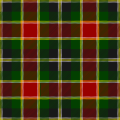Kevlar


Kevlar er et mærkevare ejet af DuPont og bruges om et materiale lavet af syntetiske fibre af poly-paraphenylen terephthalamid, som er konstrueret af para-aramid-fibre. Kevlar blev opfundet af den polsk-amerikanske kemiker Stephanie Kwolek i 1965. Hun var en del af en forskningsgruppe i den amerikanske virksomhed DuPont og det blev kommercielt tilgængeligt i 1971.
Kevlar er 5 gange stærkere end stål med samme masse men er også fleksibelt og komfortabelt.
Kevlar bliver ofte brugt til skudsikre veste, hjelme, samt isolering af pansrede eller skudsikre køretøjer.
Eksterne henvisninger
- www.kevlar.com
- Aramids
- Kevlar – Design Dictionary. Illustrated article about Kevlar
- Matweb material properties of Kevlar
- U.S. Patent 5.565.264
- Kevlar Arkiveret 3. marts 2016 hos Wayback Machine
- Kevlar in body armor
- Synthesis of Kevlar Arkiveret 3. november 2009 hos Wayback Machine
- Aberfeldy Footbridge over the River Tay Arkiveret 2. oktober 2011 hos Wayback Machine
- Kevlar Arkiveret 12. juni 2011 hos Wayback Machine på Plastics Wiki
| ||||||||||||||||||||||||||||||||||||||||||||||||||||
Medier brugt på denne side
Forfatter/Opretter:
- MacLachlan_hunting_tartan_(D._W._Stewart).jpg: Celtus
- derivative work: Rehua
A representation of the Maclachlan hunting tartan. This tartan is the oldest tartan to bear the name MacLachlan. This tartan is referred to as the Old MacLachlan, MacLachlan, and Hunting MacLachlan. This sett was first published in Old & Rare Scottish Tartans by D. W. Stewart in 1893.
Thread count: Y6, W4, Bk32, G32, Y6, W4, R48.
Sources: MacLachlan Clan Tartan WR1710 MacLachlan Hunting Tartan
Forfatter/Opretter: SoylentGreen, Licens: CC BY-SA 3.0
Hessian Fabric made seamless. It will serve to create a normal map in Blender.
Forfatter/Opretter: MartijnL, Licens: CC BY-SA 3.0 nl
Batik cloth purchased in Yogyakarta, Indonesia
Forfatter/Opretter: Cjp24, Licens: CC BY-SA 3.0
Golden yellow aramid fiber (Kevlar). The diameter of the filaments is about 10 µm. Melting point: none (does not melt). Decomposition temperature: 500-550 °C. Decomposition temperature in air: 427-482 °C (800-900 °F).
Forfatter/Opretter: Hbf878, Licens: CC0
Chemical structure of Kevlar with intermolecular hydrogen bonds shown as dashed lines.







